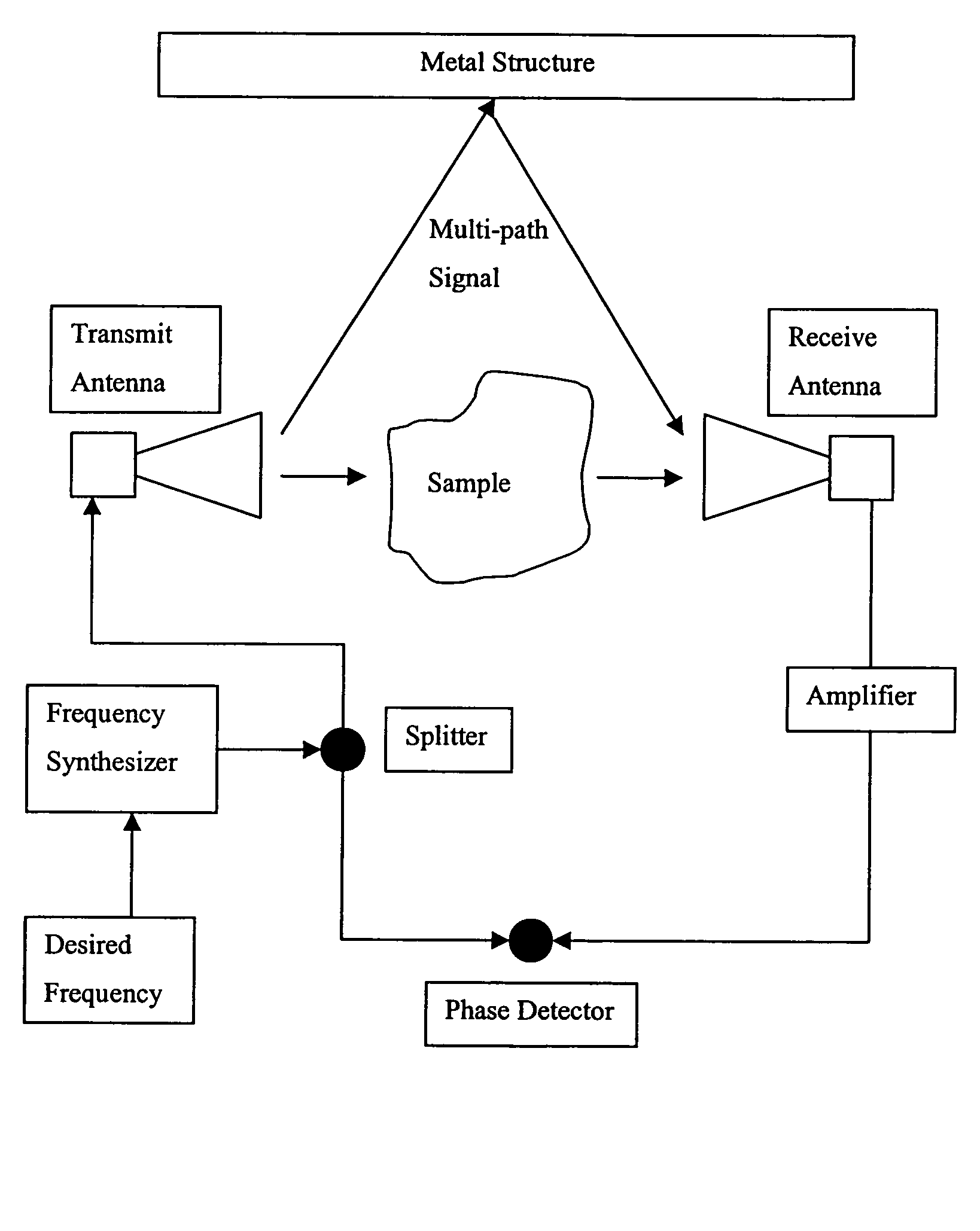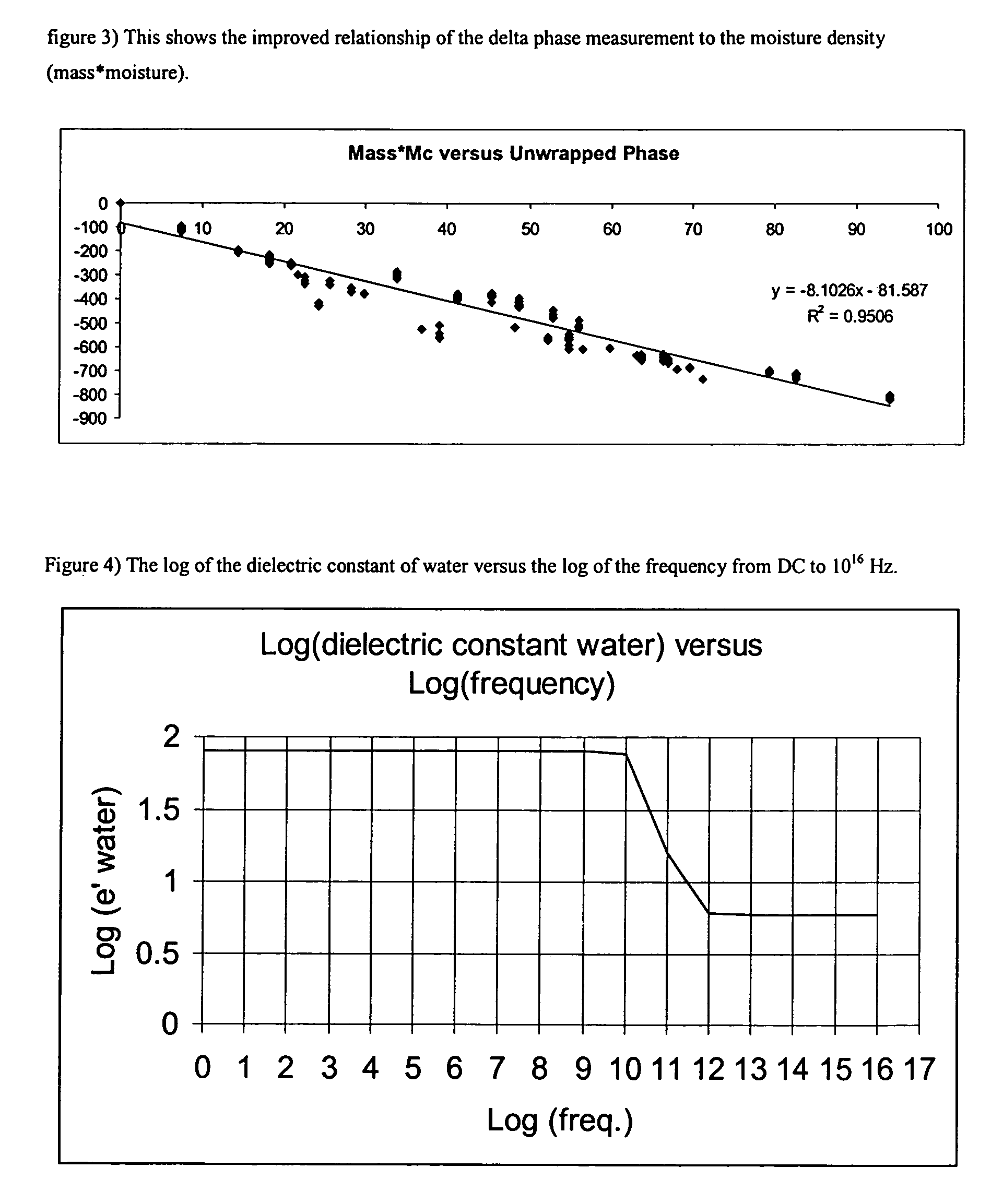Moisture measurement system for seed cotton or lint
a moisture measurement and cotton technology, applied in the direction of resistance/reactance/impedence, measurement devices, instruments, etc., can solve the problems of inability to accurately control inability to accurately measure the moisture content of the system, and inability to accurately use resistive sensors to control the system
- Summary
- Abstract
- Description
- Claims
- Application Information
AI Technical Summary
Benefits of technology
Problems solved by technology
Method used
Image
Examples
example 1
[0081]A preferred system was constructed for measuring the moisture of cotton bales. This system assumes a cotton bale density such that an industry standard Universal Density bale (UD bale) weighs approximately 500 lbs, and a path length of the material is 21 inches (the short dimension of the UD bale through which the signals will be transmitted).
[0082]The following steps were performed two times; once with no material between the antennas (air-instrument propagation delay measurement) and again with the cotton bale or material under test located between the two antennas (material plus air-instrument measured propagation delay). After obtaining both the air propagation delay and the material plus air-instrument propagation delay the final measurement is the difference between these two readings. It is this final measurement that provides a measure of the moisture content of the material for a given material density and path length. In situations where the material and path length ...
PUM
 Login to View More
Login to View More Abstract
Description
Claims
Application Information
 Login to View More
Login to View More - R&D
- Intellectual Property
- Life Sciences
- Materials
- Tech Scout
- Unparalleled Data Quality
- Higher Quality Content
- 60% Fewer Hallucinations
Browse by: Latest US Patents, China's latest patents, Technical Efficacy Thesaurus, Application Domain, Technology Topic, Popular Technical Reports.
© 2025 PatSnap. All rights reserved.Legal|Privacy policy|Modern Slavery Act Transparency Statement|Sitemap|About US| Contact US: help@patsnap.com



